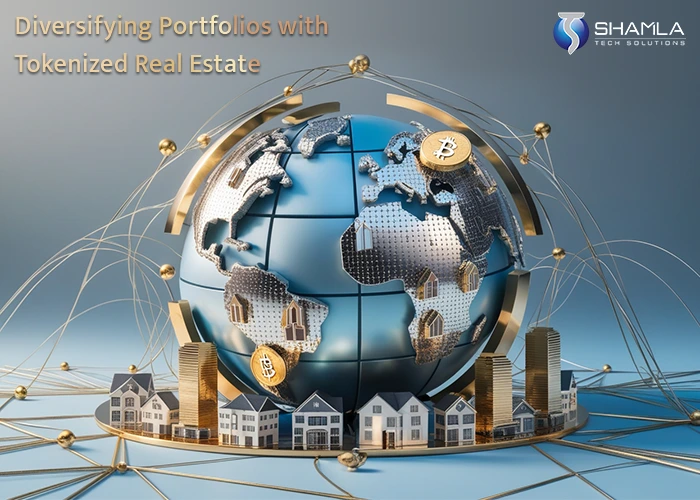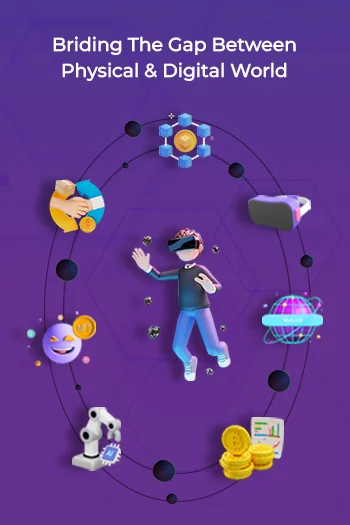Tokenization of real-world assets refers to the process of converting physical assets, such as real estate, commodities, or securities, into digital tokens on a blockchain. This innovative approach offers numerous advantages, collectively enhancing the efficiency, accessibility, and security of asset management and investment.
One of the primary benefits of tokenization in real-world assets is enhanced liquidity. By dividing assets into smaller, tradable tokens, investors can buy and sell fractional ownership, making it easier to enter and exit investments. Another significant benefits of tokenization in real-world assets is increased transparency.
The benefits of tokenization in real-world assets include enhanced liquidity, increased transparency, reduced transaction costs, and greater accessibility. As blockchain technology continues to evolve, these advantages are likely to drive widespread adoption of asset tokenization, transforming traditional financial systems and opening new avenues for investment and asset management.

What Is Asset Tokenization?
Asset tokenization is the process of converting ownership rights in a tangible or intangible asset into digital tokens on a blockchain. This method allows assets such as real estate, stocks, or art to be represented digitally, facilitating easier transfer and management. The benefits of tokenization in real-world assets is manifold, enhancing various aspects of asset management and investment.
The process by which an issuer generates digital tokens on a blockchain or other distributed ledger to symbolize either digital or physical assets is known as asset tokenization. Blockchain technology ensures that once you purchase tokens representing an asset, no one single authority can remove or alter your ownership, therefore making it totally unchangeable.
Bitcoin transformed the ways in which assets and investments might be created, handled, and sold. Originally the technology underpinning the first cryptocurrency, blockchain is a kind of distributed ledger technology (DLT) that allowed fresh investing opportunities.
What Are the Benefits of Tokenized Assets?
Enhanced Liquidity
Improved Accessibility
Enhanced Transparency and Security
Operational Efficiency and Cost Reduction
Benefits of Real Estate Tokenization
Asset tokenization platform benefit investors in multiple ways. Benefits of tokenization in real-world assets like real estate tokenization offer specific advantages, such as enabling fractional ownership, which allows investors to purchase portions of properties rather than entire assets. This approach lowers the investment threshold and facilitates diversification across multiple properties.
Additionally, tokenization can expedite transactions and reduce associated costs by minimizing the reliance on intermediaries. For example, platforms like Lofty and RealT offer tokenized real estate investments, allowing investors to buy fractions of properties and receive rental income. As the benefits of real estate tokenization grow every day, there is a huge demand rising from the investors.
Benefits of Token Development

How to Invest in Tokenized Assets?
After learning about the benefits of tokenization in real-world assets, it is difficult to stop investing in it. If you are new to this, we will walk through the steps involved in how to invest in tokenized assets, which involve several steps:
Choose a Reputable Platform: Select a regulated and trustworthy platform that offers tokenized asset investments. Platforms like Archax and Securitize provide access to a variety of tokenized securities.
Complete Necessary Compliance Procedures: Undergo required identity verification and compliance checks, such as Know Your Customer (KYC) and Anti-Money Laundering (AML) protocols.
Fund Your Account: Deposit funds into your account using accepted payment methods, which may include traditional currencies or cryptocurrencies.
Explore Investment Opportunities: Browse available tokenized assets, such as real estate, equities, or bonds, and assess their potential returns and risks.
Execute Investments: Purchase tokens representing fractional ownership of the chosen assets.
Manage and Monitor: Utilize the platform’s tools to track your investments, receive updates, and manage your portfolio.
Examples of tokenized real-world assets
Real Estate
Private Equity
Bonds and Money Market Funds
Treasury Securities

Real-World Asset Tokenization Challenges
Regulatory and Legal Uncertainty
Establishing Ownership and Authenticity
Technological and Security Risks
Market Infrastructure and Liquidity Concerns
Integration with Existing Financial Systems
Integrating tokenized assets into traditional financial systems presents challenges related to interoperability and acceptance. Financial institutions may be hesitant to adopt new technologies without clear standards and proven benefits, slowing the integration process and limiting the scalability of tokenization initiatives.
Despite these challenges, the benefits of tokenization in real-world assets remain compelling. To avoid these problems, regulators, technology developers, and financial institutions must work together. This is essential for the successful growth of real-world asset tokenization.


